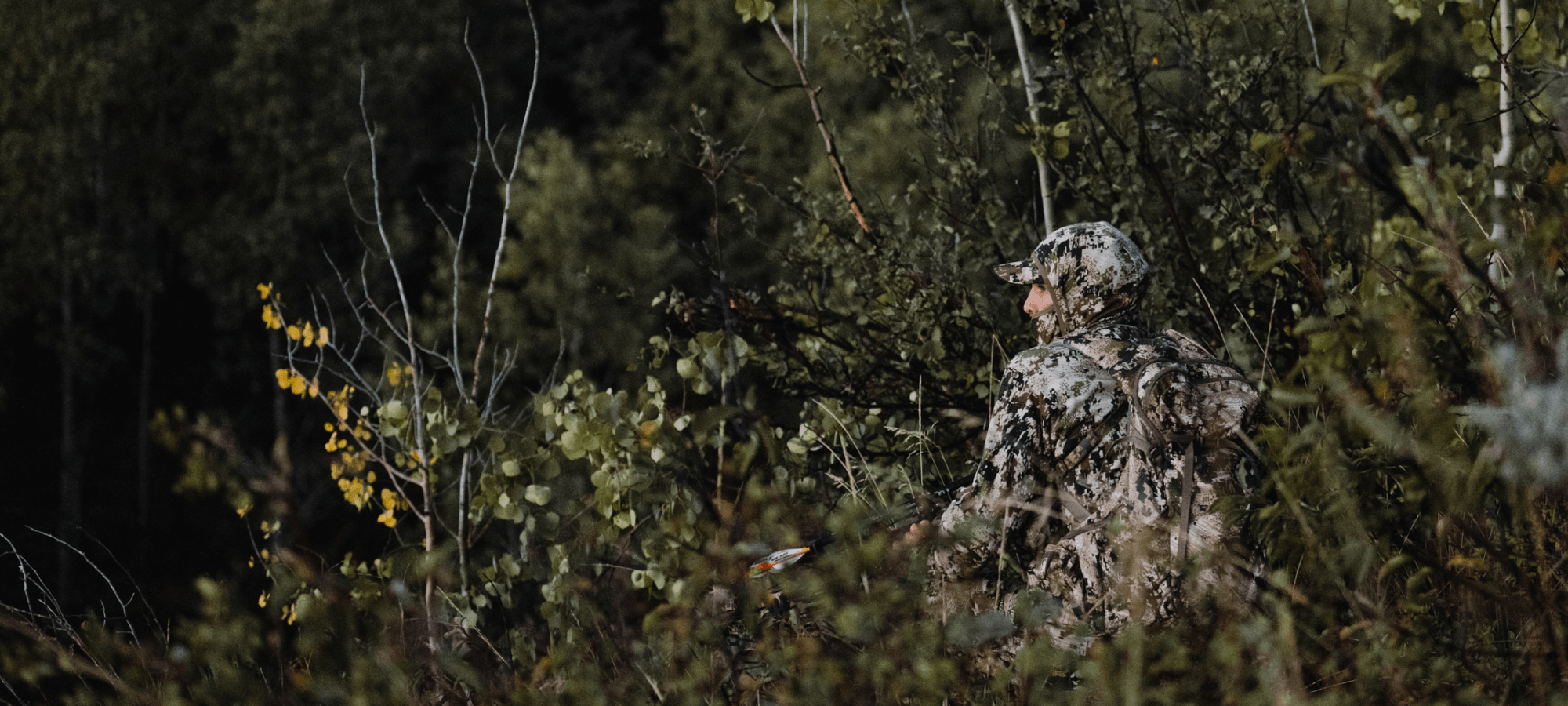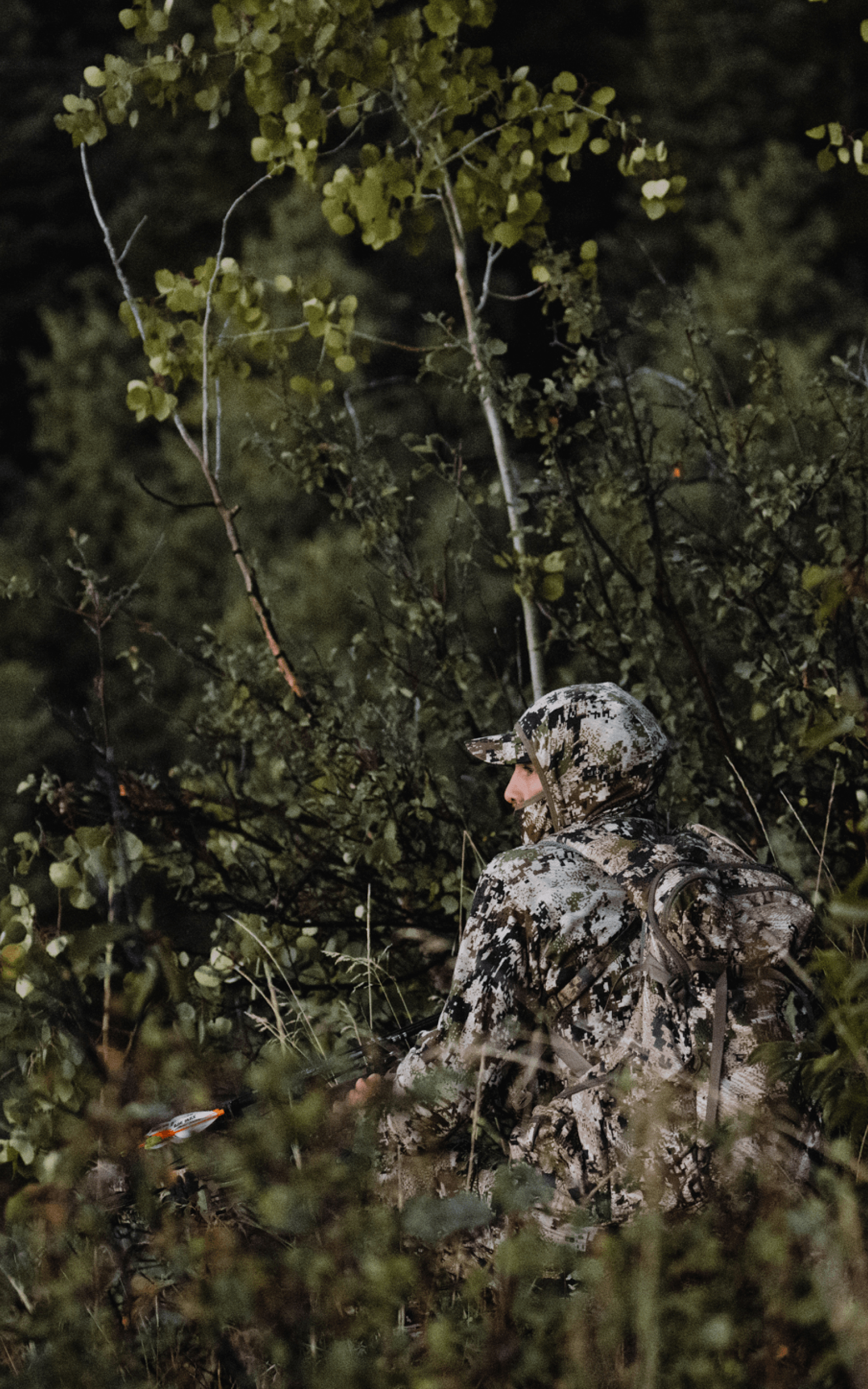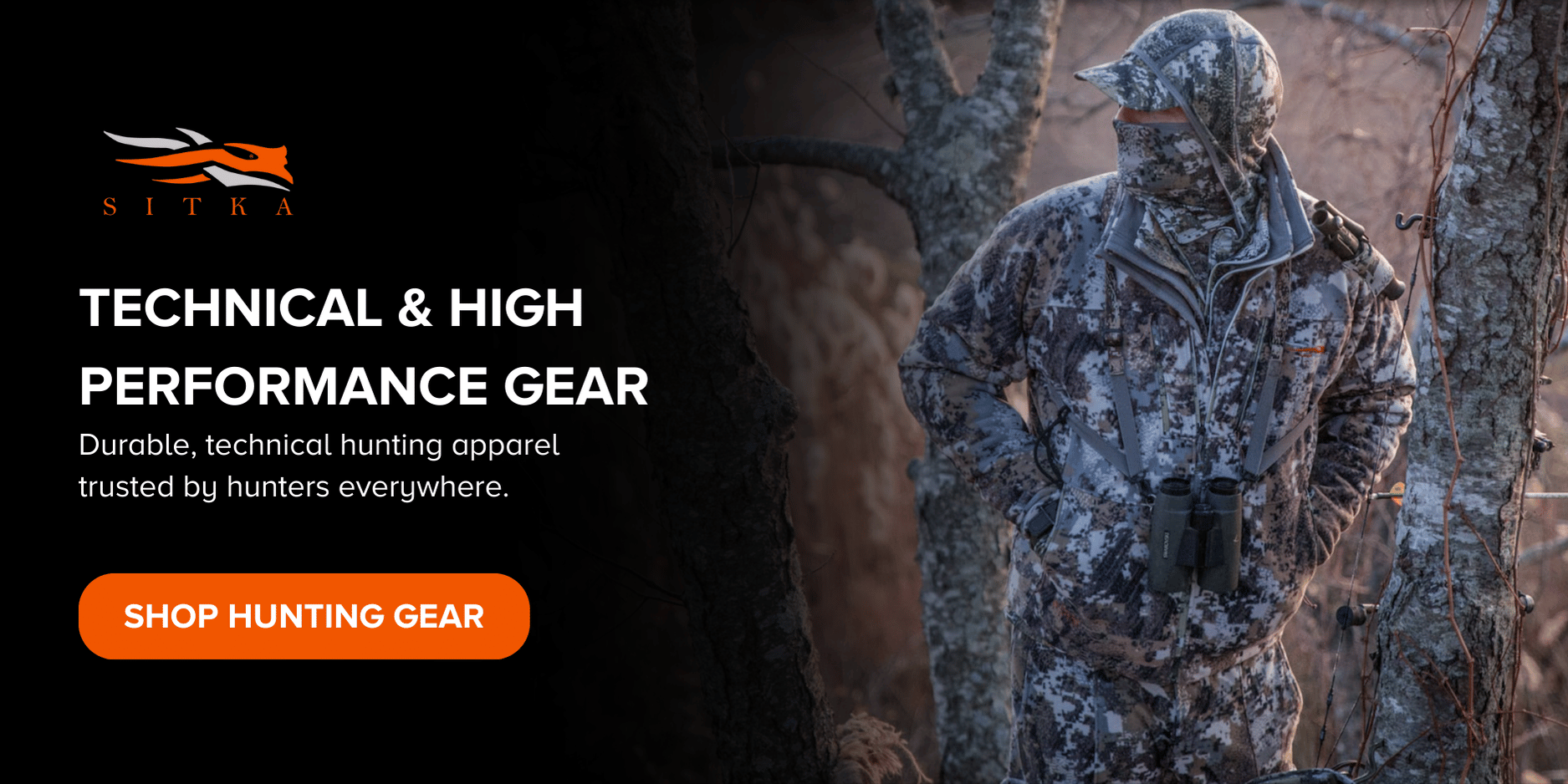10.22.2024
What Is the Hunter’s Most Important Item of Clothing?
What is the Hunter’s Most Important Item of Clothing?
As hunters, most of the time we focus on being hidden. Our efforts are spread thin between scent control, choosing the right camo pattern, and keeping all our hunting gear silent. However, any seasoned hunter will tell you that safety is always the number one priority. Picking the right camouflage pattern to keep hidden from game like deer and elk is important to being successful during hunting season. While we always want to be invisible to game, we also want to be safe. Whether you are hunting early season in the Midwest and need to dress light for warmth, or if you need foolproof rain gear for a once-in-a-lifetime hunt, your hunting clothing is essential gear for your adventure. We all want to go on more hunts, and the right clothing can keep us safe for a lifetime of adventures.
Essential Clothing for Hunters
Blaze Orange for Safety
Up until the 1960s hunters gave little thought to clothing as safety. Before hunters across the world started wearing blaze orange, tragic accidents often occurred due to hunters wearing more subdued clothing patterns. Blaze orange, also known as hunter orange, is a vibrant, highly visible color that is used in hunting gear and clothing to increase visibility and safety. The use of blaze orange in hunter safety has its roots in the early 1960s in the United States. Before the adoption of blaze orange, hunters often wore clothing that blended in with the natural environment, making them less visible to other hunters. This lack of visibility led to numerous hunting accidents each year, many of which were fatal. In response to these safety concerns, various states began to require hunters to wear blaze orange clothing during hunting seasons. Blaze orange is highly visible and stands out against most natural backgrounds, making hunters more easily seen by other hunters. This safety factor arguably makes any piece of blaze orange a hunter’s most important piece of clothing. Over time, the use of blaze orange in hunter safety became more widespread, and today it is a standard safety practice in many parts of the world. Hunters are typically required to wear a certain amount of blaze orange hunting clothing, such as a vest or hat, to ensure that they are easily visible to others in the field.
The Significance of Base Layers
Hunting base layers play a crucial role in regulating body temperature, especially in outdoor activities or extreme weather conditions. These garments are designed to be worn closest to the skin and are made from materials that help manage moisture and keep the wearer comfortable during both moments of high aerobic activity and moments of rest.
Base layers provide the following benefits:
Moisture Management: Base layers are often made from synthetic fabrics like polyester or natural fibers like merino wool. These materials have wicking properties, meaning they pull moisture (sweat) away from the skin and towards the outer layers of clothing, where it can evaporate more easily. This helps keep the skin dry and prevents the body from losing heat through evaporation, which can lead to cooling.
Insulation: Base layers also provide a layer of insulation. In cold weather, they trap a thin layer of warm air against the skin, helping to retain body heat. This is especially important during periods of inactivity when the body is not generating as much heat through physical exertion.
Temperature Regulation: Base layers help regulate body temperature by keeping the skin dry and maintaining a comfortable level of insulation. In hot weather, they can help cool the body by wicking away sweat and allowing it to evaporate, which has a cooling effect. In cold weather, they provide insulation and help retain heat.
Comfort and Performance: Base layers also contribute to overall comfort and performance. They are often designed with flat seams and stretchy, form-fitting materials that move with the body, reducing chafing and irritation. This is especially important in activities that require a wide range of motion, such as hiking, skiing, or climbing.
The Importance of Mid Layers
Mid layers play a crucial role in providing body warmth by trapping and retaining heat close to the body. These garments are designed to be worn over base layers and under outer layers, such as jackets or shells, in layered clothing systems commonly used in outdoor activities. Mid layers are essential for providing insulation and warmth. Synthetic insulation, down, and fleece are some of the common forms of mid layer hunting clothes.
Hunting Jackets & Outer Layers
Outer layers for hunters play several important roles, primarily focused on protection from the elements, visibility, and functionality in the field. Key aspects of outer layers include weather protection, insulation, visibility, camo, functionality, durability, and layering. Waterproof GORE-TEX hunting rain jackets are essential parts of many hunters’ systems, as are windproof layers made possible by WINDSTOPPER® by GORE-TEX LABS.
Additional Hunting Apparel for Comfort and Protection
Headgear: Beanies and Caps
Hunting beanies and caps provide protection from the elements. They can also help keep the head dry in wet conditions, which is important for staying comfortable and preventing heat loss. Caps with brims, like hunting trucker hats, can provide shade for the eyes and face, reducing glare and the risk of sunburn. This is particularly important in sunny conditions, especially when hunting in open areas with little shade. In addition to camouflage patterns, some beanies and caps come in bright colors like blaze orange, which increase visibility and safety by making hunters more easily seen by other hunters in the field.
Hand and Footwear: Gloves and Socks
Hunting gloves and socks are essential pieces of gear for hunters, providing comfort, protection, and functionality in the field. Gloves protect the hands from cold, wind, rain, and rough terrain. They can also provide protection from cuts, scrapes, and thorns while moving through the brush. Many gloves have textured palms or fingers that improve grip, making it easier to handle firearms, compound bows, and other equipment safely and effectively. Socks keep our feet comfortable, and help us stay in the field longer as hunters trying to fill that tag. Insulated socks help keep the feet warm in cold weather, preventing discomfort and reducing the risk of frostbite. Socks made from moisture-wicking materials help keep the feet dry by wicking sweat away from the skin. This helps prevent blisters and discomfort. The amount of hiking most hunters do, combined with the possibility of feet wet with sweat or rainwater, makes a moisture-wicking sock vitally important—socks, it could be argued, may be the most important piece of clothing a hunter wears.
Specialized Hunting Gear: Rain Gear and Gaiters
People wear gaiters over their boots for several reasons, primarily to provide protection and additional functionality in outdoor activities such as hiking, hunting, and mountaineering. Gaiters cover the lower part of the legs and the tops of the boots, protecting them from rocks, dirt, snow, water, and other debris. This can help keep feet and lower legs dry, clean, and free from scratches or cuts. Gaiters provide an additional layer of protection against the elements. They can help keep feet and lower legs warm and dry in cold or wet conditions by preventing snow, rain, or wind from entering the boots.
GORE-TEX hunting rain gear is essential for outdoor activities, especially in areas with unpredictable weather. It provides protection against rain, wind, and cold temperatures, keeping you dry and comfortable. Rain gear helps us stay dry, warm and comfortable in the field.
Packing Essentials for a Hunting Trip
For a hunting trip, it's important to pack clothing that will keep you comfortable, protected, and safe in the outdoors. Here are some essential clothing items to consider:
Base layers: Moisture-wicking base layers help regulate body temperature and keep you dry by wicking sweat away from your skin. Choose base layers appropriate for the weather conditions you'll be hunting in and the level of exertion (light, mid, or heavyweight).
Outer layers: Outer layers should be waterproof, windproof, and breathable to protect you from the elements. A waterproof and insulated jacket and hunting pants are ideal for cold or wet weather.
Hunting vest: A blaze orange hunting vest is essential for visibility and safety. Look for a vest with pockets for storing ammunition, maps, and other essentials.
Hunting boots: Sturdy, waterproof hunting boots with good ankle support are essential for navigating rugged terrain. Insulated boots are necessary for cold weather hunts.
Socks: Moisture-wicking, cushioned socks help keep your feet dry and comfortable. Consider wearing a moisture-wicking liner sock under a thicker sock for added comfort.
Gaiters: Gaiters protect your lower legs and boots from debris, water, and snow. They are especially useful in wet or snowy conditions.
Gloves: Insulated, waterproof gloves protect your hands from the cold and provide grip when handling equipment. Consider gloves with a trigger finger for shooting.
Hat: A hat with a brim helps keep the sun out of your eyes and provides some protection from the elements. Choose a hat in a camouflage or blaze orange pattern.
Neck gaiter or scarf: Hunting neck gaiters or scarves provide extra warmth and can be pulled up to cover your face in cold or windy conditions.
Rain gear: This will help keep you dry and comfortable.
Extra clothing: Pack extra base layers, socks, and gloves in case you get wet or need to change during
Types of Hunting Clothes to Avoid
Noisy fabrics can ruin a hunt in a heartbeat. We all love new gear, but new boots can be torture. Many a hunt has been ruined by the sting of new boots. Nobody wants to hurt their feet just like nobody wants to end their hunt early, but brand-new boots can do just that. Be sure your boots are well broken in before the season starts. When you get a new pair of boots, wear them around the house for a bit before wearing them for gradually longer and longer hikes. One fabric hunters should know to avoid is cotton. Cotton gets wet and stays wet. Cotton robs the body of warmth and comfort faster than any stiff breeze.
The SITKA Gear Advantage
SITKA was born out of necessity. Each piece of hunt clothing we create is designed specifically to solve a problem and to be the best possible item for a specific use case. SITKA Gear is designed to eliminate the distraction of discomfort. It goes beyond clothing and performs in the harshest conditions keeping you on the mountain, stand, or in the field longer.
The truth is, there is no one piece of clothing that is the most important for hunters. Hunt clothing is meant to act as a complete system. No two hunters have the same perfect clothing system. Check out our collection of performance hunting gear now to build yours.
Sources
Jones, Wayne. n.d. “Hunter Orange: Proving the Obvious.” Www.atsko.com. Accessed June 13, 2024. https://www.atsko.com/hunter-orange-proving-the-obvious/.
Rinella, Steven. 2018. “What You Need to Know about Layering for Hunting.” Www.themeateater.com. June 18, 2018. https://www.themeateater.com/gear/gear-hunt/what-you-need-to-know-about-layering-for-hunting.


